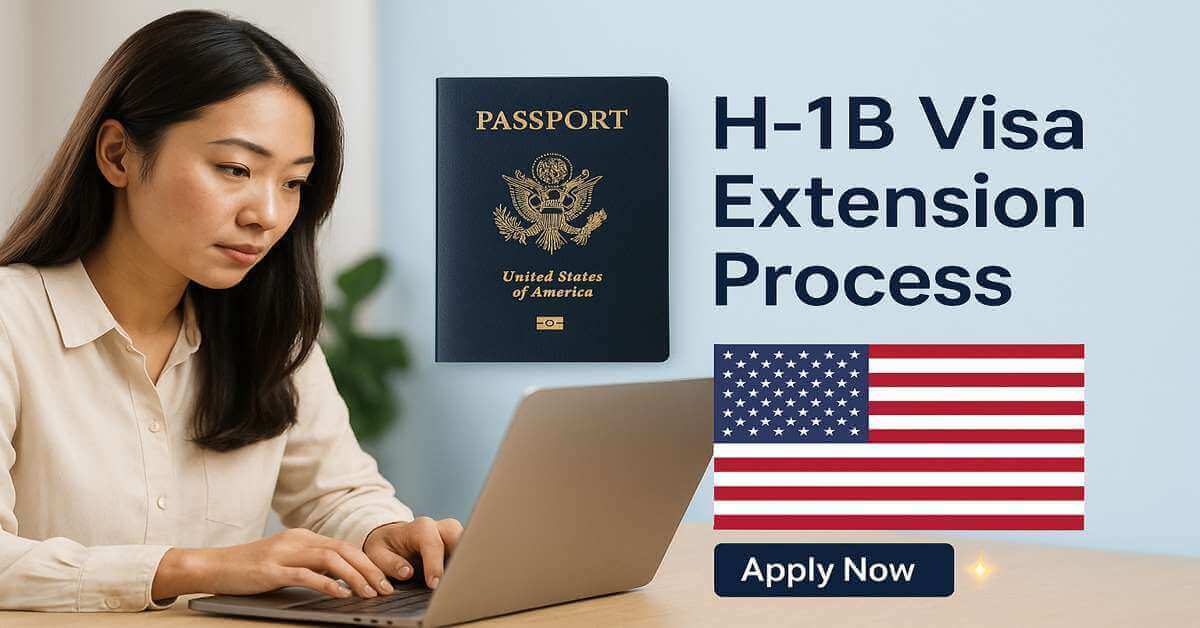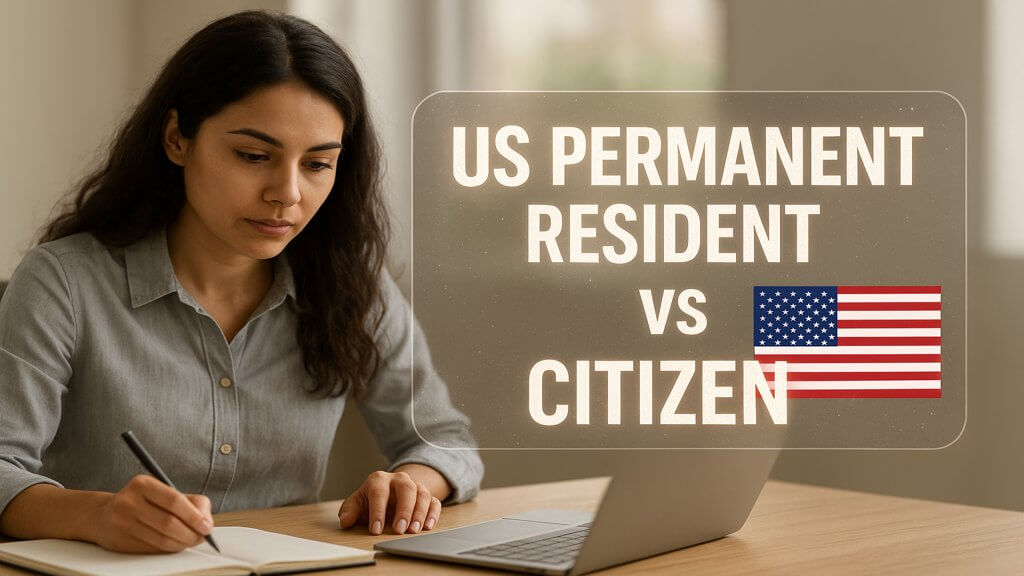The H-1B visa is initially issued for up to 3 years, with the option to extend it up to a total of 6 years under U.S. immigration law.
This guide explains how to file an H-1B visa extension, timelines to expect, employer responsibilities, and updates on related programs such as stateside renewals.
Eligibility:
You may be eligible to extend your H-1B visa if:
- You have not yet reached the 6-year maximum stay under H-1B status.
- Your job duties and employer remain the same or meet the eligibility criteria.
- Your employer is willing to file the extension on your behalf.
Under the American Competitiveness in the Twenty-First Century Act (AC21), H-1B holders may be eligible for extensions beyond the 6-year limit if a green card process is underway. Learn more on USCIS AC21 Guidance.
Check Also: H-1B Visa Cap and Lottery Process for Employers
How to File H-1B Visa Extension Process for 2025?
The H-1B extension process must be initiated by the employer. Here are the steps involved:
1. Start Early
USCIS allows extension petitions to be filed up to 6 months before the current H-1B validity expires. Filing early helps avoid status lapses.
2. Employer Files Form I-129
The sponsoring employer must complete and submit Form I-129 (Petition for a Nonimmigrant Worker) to USCIS.
3. Gather Required Documents
Typical documents include:
- Form I-129 with appropriate supplement
- A certified Labor Condition Application (LCA)
- Copy of current Form I-797 (Approval Notice)
- Employer letter confirming continued employment
- Proof of the job being a “specialty occupation”
- Employee’s degrees, certificates, and résumé
- Pay stubs or W-2 forms to show maintained status
4. Pay Filing Fees
Fees can vary. At minimum:
- Form I-129 fee: $780
- Anti-fraud fee: $500 (if applicable)
- ACWIA fee: $750 or $1,500 based on employer size
- Public Law 114-113 fee: $4,000 (if applicable)
- Premium Processing (optional): $2,805
Check USCIS Fee Calculator for current rates.
5. Track the Petition
After submission, USCIS will issue a Receipt Notice (Form I-797C). Use this to track the case at USCIS Case Status.
6. Maintain Status
If filed before the current visa expires, the applicant receives 240-day work authorization while awaiting a decision.
Extension Processing Time:
- Standard processing: 1.5 to 4 months
- Premium Processing: 15 calendar days (for $2,805 fee)
Understanding the Six-Year Limit:
The maximum stay on H-1B is generally 6 years. However, you may qualify for extensions beyond 6 years if:
- You have an approved I-140 immigrant petition and can’t adjust status due to visa backlogs.
- You have a pending PERM application or I-140 filed at least 365 days before reaching your 6-year cap.
After reaching the six-year limit without a green card application, you must leave the U.S. for at least one year before reapplying.
Stateside H-1B Visa Renewal Pilot:
The U.S. Department of State has launched a pilot program allowing eligible H-1B holders to renew visas from within the U.S., rather than traveling abroad.
Key notes:
- This is for visa stamping, not status extension.
- The pilot is limited to certain cases and timeframes.
- It does not replace the USCIS extension process via Form I-129.
Extension Cost Breakdown:
| Type of Fee | Amount (Approx.) |
|---|---|
| I-129 Filing Fee | $780 |
| Fraud Prevention Fee (new only) | $500 |
| ACWIA Fee (based on size) | $750 or $1,500 |
| Premium Processing (optional) | $2,805 |
| Legal Fees (if applicable) | Varies |
Employers Changing:
If you change employers while on H-1B, the new employer must file a new I-129 petition, even if your prior H-1B hasn’t expired. You may begin work as soon as the receipt is issued, under H-1B portability rules.
Conlusion:
H-1B extensions require advance planning, accurate paperwork, and coordination with your employer. Staying informed about updates like stateside renewals and the six-year limit can help you make strategic immigration decisions.
Frequently Asked Questions:
-
Can I continue working while my H-1B extension is pending?
Yes. As long as the extension petition is filed before your current H-1B expires, you can continue working for up to 240 days while waiting for a decision.
-
How long does it take to process an H-1B extension?
Processing times vary by USCIS service center. On average, it takes 1.5 to 3 months under regular processing. With Premium Processing, USCIS guarantees a response within 15 calendar days.
-
When should I apply for an H-1B extension?
USCIS recommends that your employer files the extension up to 6 months before your current H-1B status expires. Filing early helps avoid work interruptions and legal stay issues.






